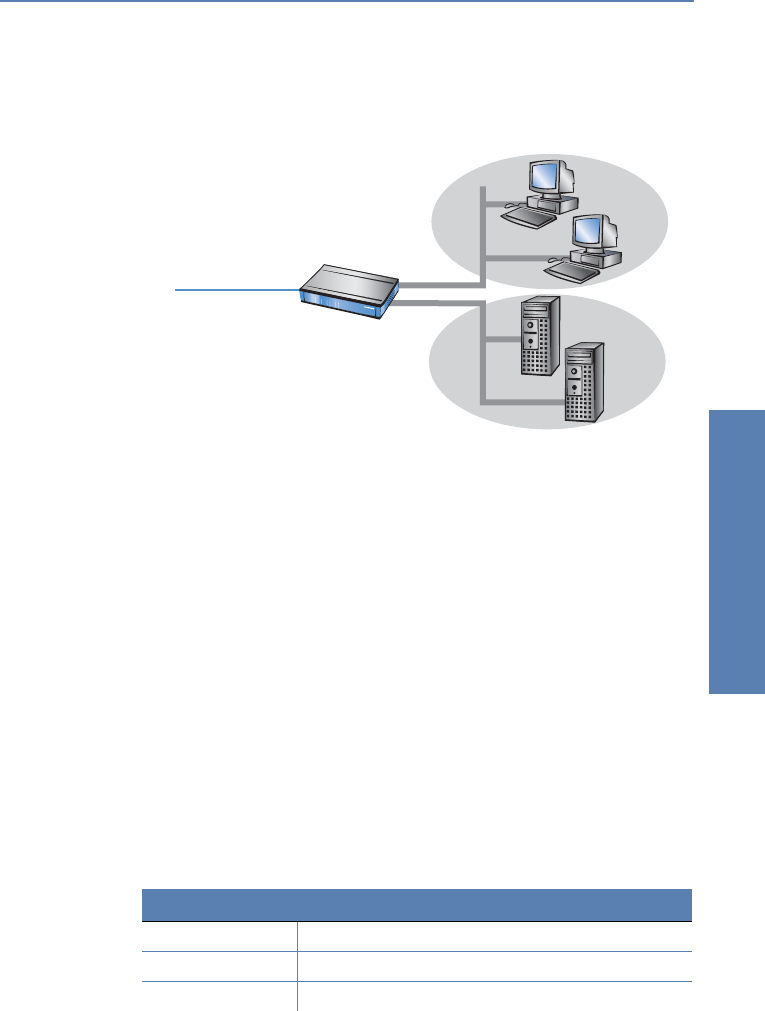
̈ Chapter 7: Routing and WAN connections LANCOM Reference Manual LCOS 3.50
77
Routing and WAN
connections
On the local side, the router supports two different networks: The Intranet
and the DMZ (’de-militarized zone’). The DMZ marks a distinct, separate local
network, usually for servers, that must be accessible from the Internet.
The routing table’s Masquerading entry informs the router module whether
local Intranet or DMZ addresses should be hidden behind the router’s Internet
IP address or not:
̈ IP Masquerading switched off: No masquerading.
This variant is intended for Internet access with multiple static IP
addresses (to be entered under DMZ network address and DMZ netmask).
Examples would be to connect servers to the Internet, or to connect two
Intranet subnets via VPN.
̈ masking Intranet and DMZ (default): This setting masks all local
addresses. Additionally to the Intranet, a second local network (DMZ) with
private IP addresses can be connected to the Internet as well.
̈ masking Intranet only: This setting is ideally suited for Internet access
with multiple static IP addresses. Other than with ’IP Masquerading
switched off’: Additionally to the DMZ, an Intranet with private IP
addresses is supported simultaneously.
The DMZ and Intranet address assignment of the LANCOM can be entered
at the following places:
Configuration tool Run
LANconfig TCP/IP ̈ General
WEBconfig Expert Configuration ̈ Setup ̈ TCP-IP--Module
Terminal/Telnet
/Setup/TCP-IP-Module
Intranet
(LAN)
DMZ
public IP:
80.146.74.146
DMZ IP:
192.168.2.1
LAN IP:
10.0.0.1


















